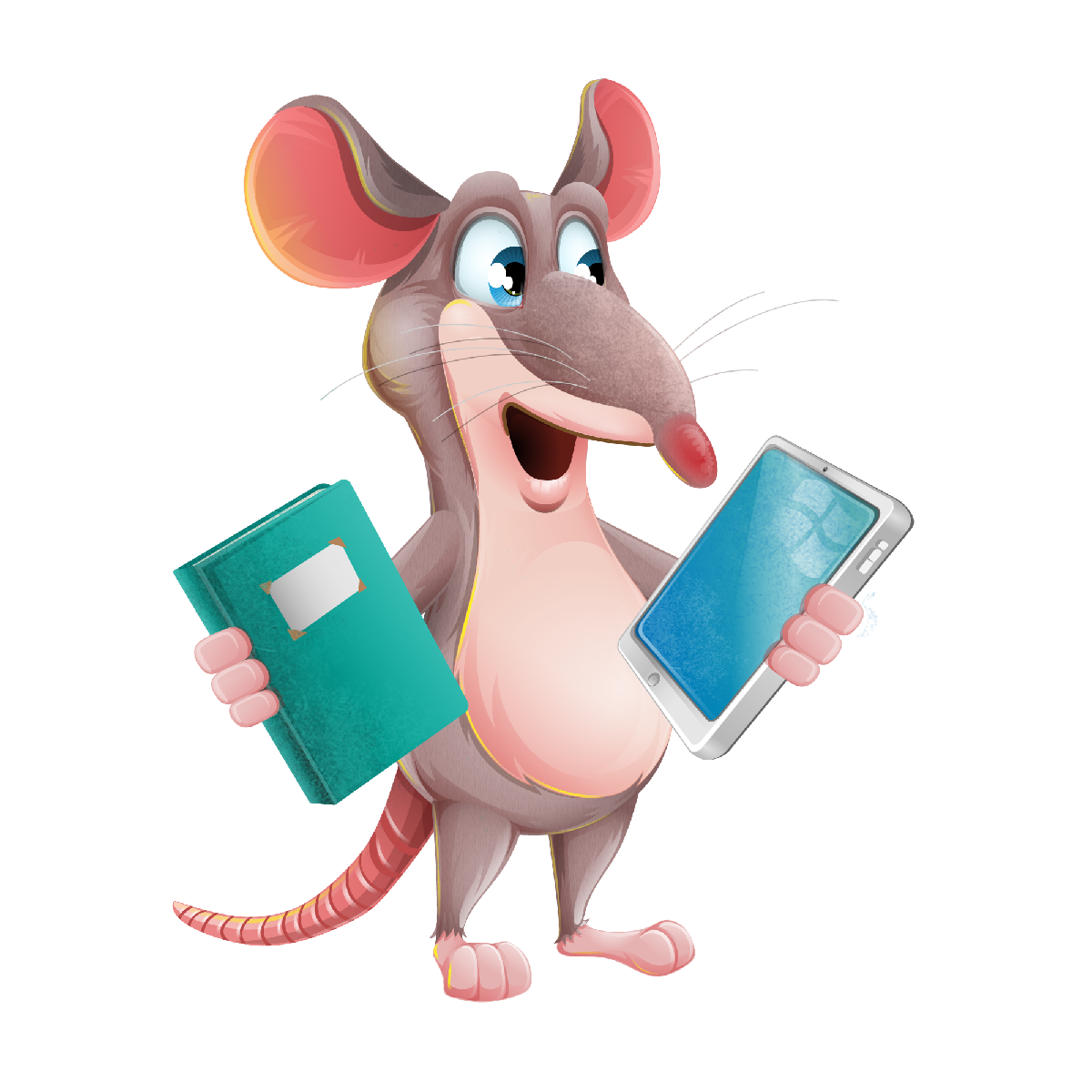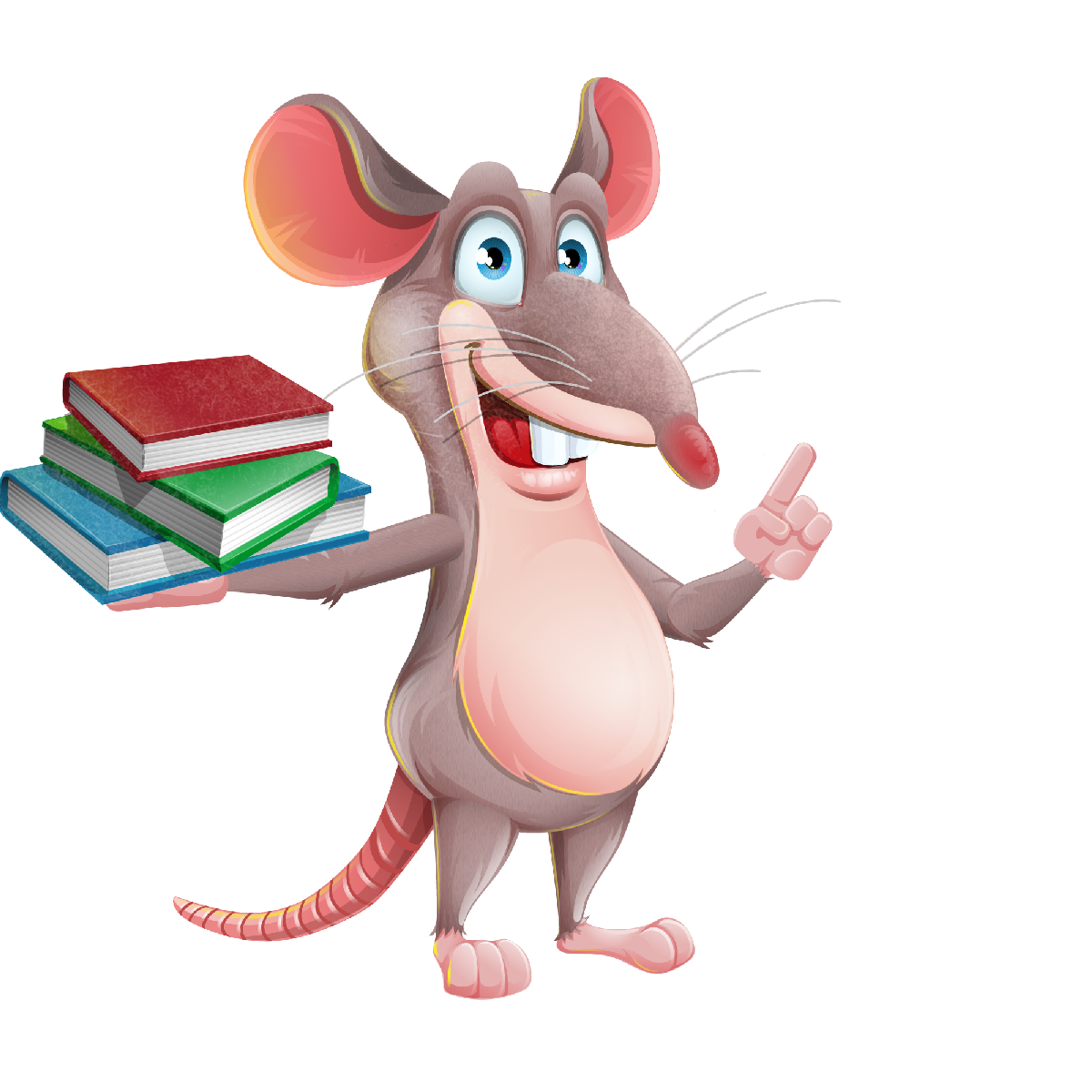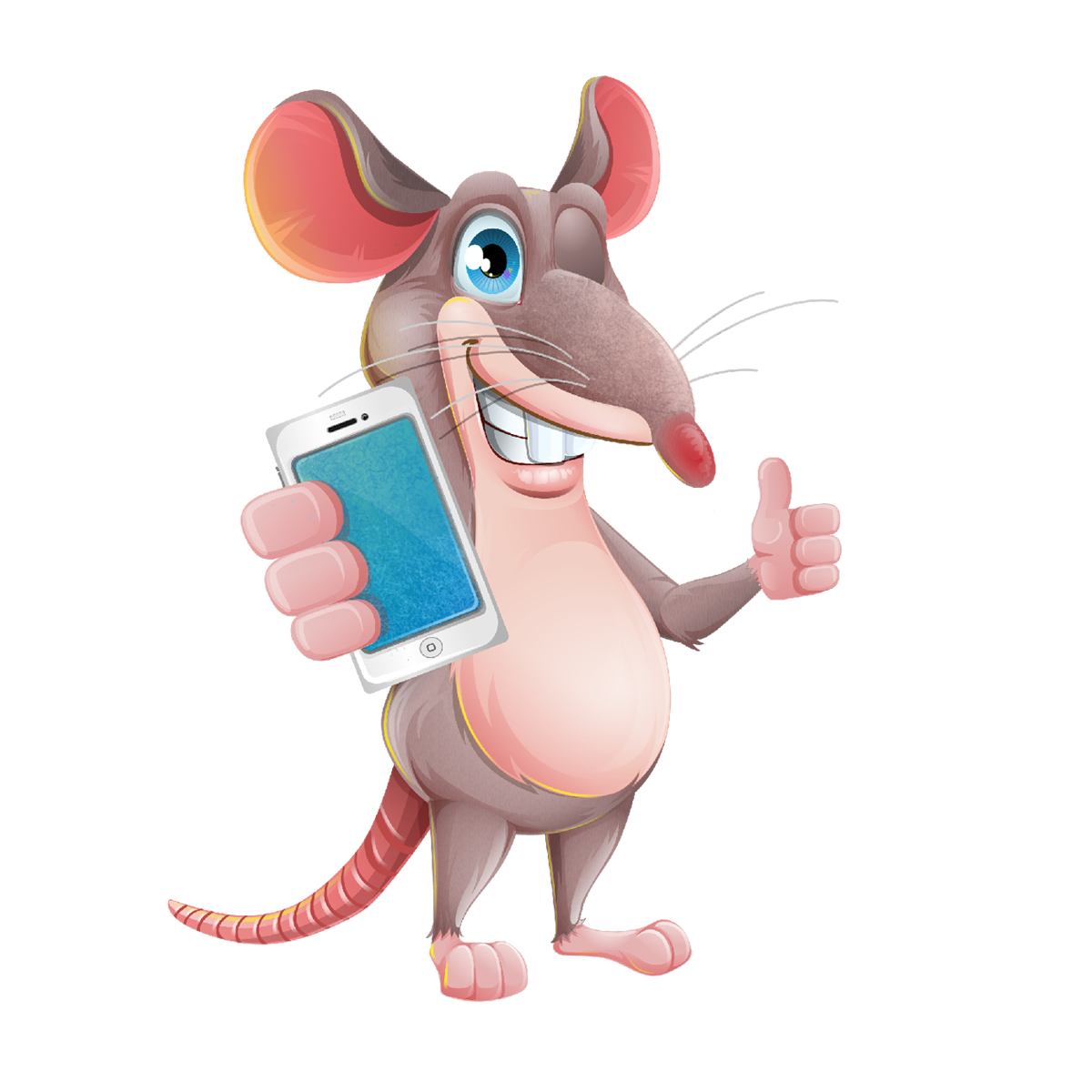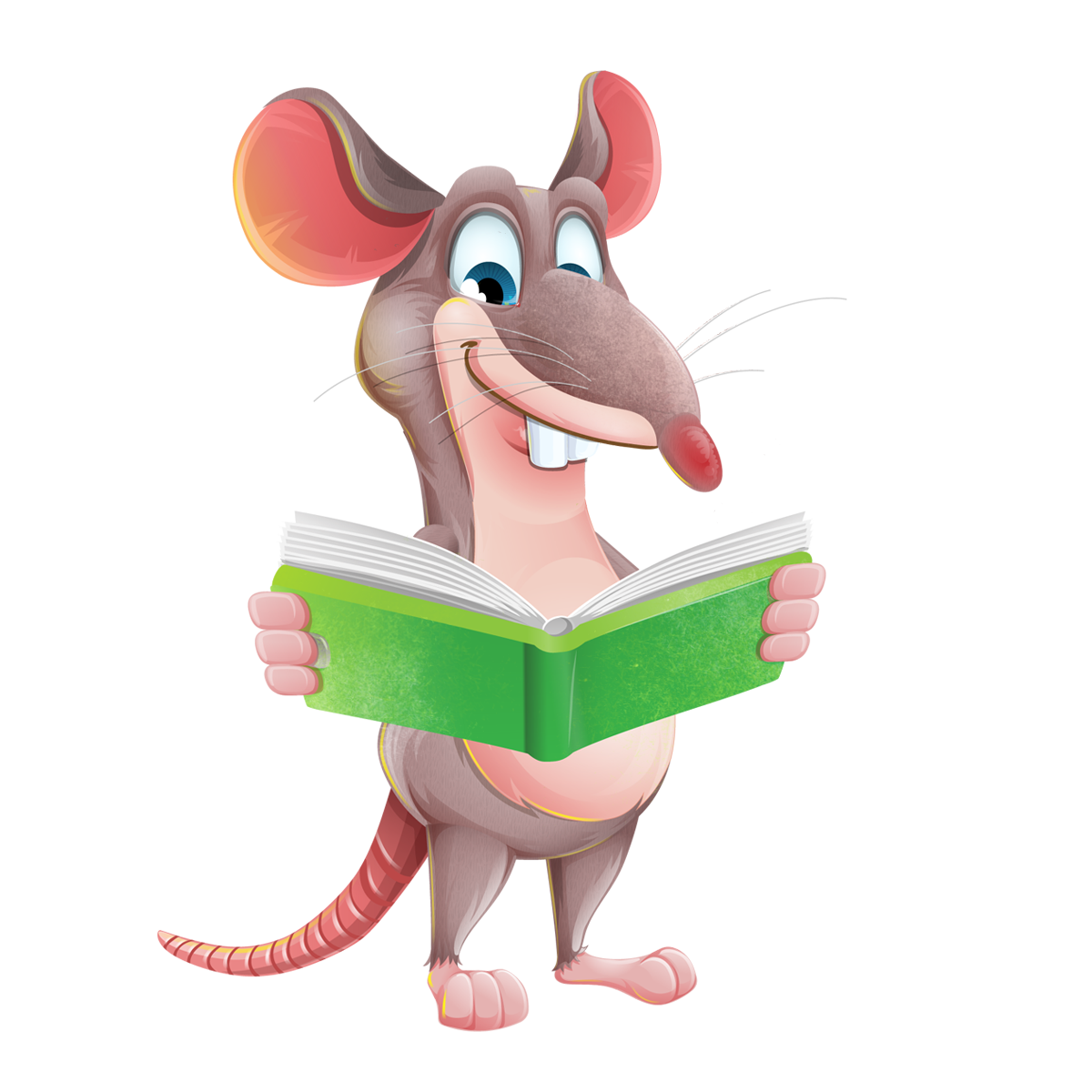The Husky Rat – How do I know if my rat is one?
Dernière mise à jour : 18 octobre 2023 à 2h24 → pas de commentaire
Why does my Husky rat change color?
When you adopted your rats, you were told that one of them was a Husky rat. You didn’t bat an eyelid at the time. You thought to yourself
I don’t care if it’s a Husky rat, a Sapphire rat or a Sphinx rat… for me, the most important thing when it comes to adopting a rat is that it’s a beautiful little ball of fur full of love.
But then you notice that your rat’s color seems to be fading, and you wonder what could be causing this rapid change in your rat. That’s when the famous Husky name comes into play, and for the first time you’re interested in rat varieties. But how can you tell when a neophyte like you reads a sentence like this?
A Husky rat can be recognized by its marking and/or dilution
In this case, you roll up your sleeves and give your roan rat a few minutes to find out what’s happening to him
I can already see you widening your eyes at the words marking and dilution, and I have no difficulty imagining your inner speech going something like this
Come on! I’m going to have a good snoring session over this article
And I answer you
Oh no, I’m not letting you off the hook with that kind of prejudice. I insist, I’m holding you back and here’s your attention! Let’s get started! I guarantee you’ll learn something interesting about your new companion right now, and you won’t feel like you’re reading empty, dull content, as is often the case when someone takes themselves too seriously when writing an article
Husky rat marking and dilution
I’m going to start by making you understand what defines a rat’s variety (not breed) by opting for a type of rat that’s ultra-popular within the community of people who understand that the rat is the pet par excellence: the Husky rat
The Husky rat
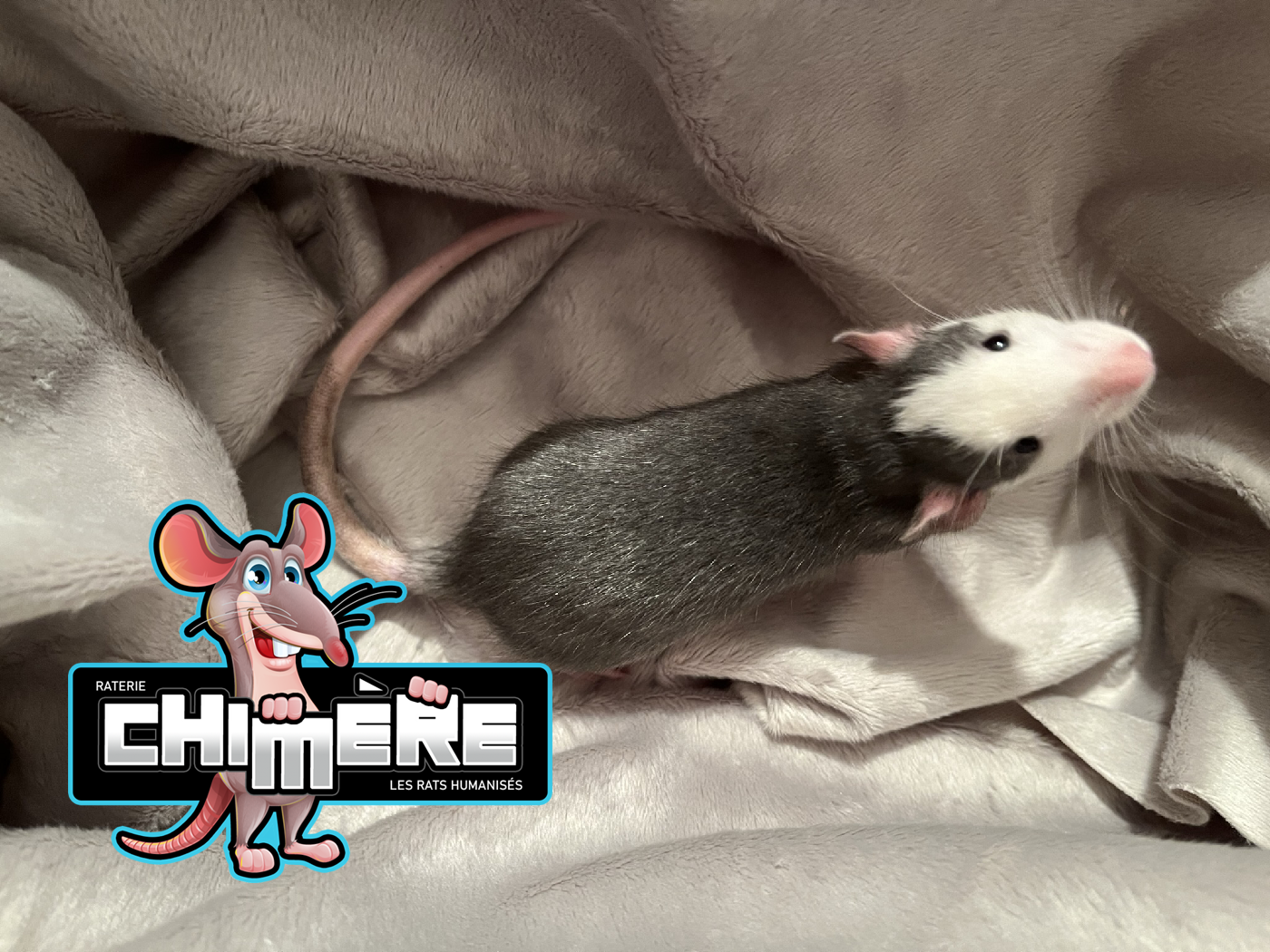
The husky rat is a perfect example because it’s a rat that’s both born with a well-defined marking and that transforms over time to give a dilution effect on its color as the marking that’s made up of white hairs becomes more and more extensive. In other words, if you look at the evolution of the Husky rat’s color, you’ll see that a baby Husky has a darker, sharper marking because it has more colored hair than white hair. Over time, however, the opposite will happen. The husky rat will have more white hairs than colored hairs. In fact, the new white hairs will define a marking on the Husky rat that changes over time as each colored hair gives way to a new white hair. According to some Husky breeders, it’s more a case of dilution of the coat, as the color of the coat will be diluted over time. When the Husky is a baby, its color is well defined and all its hairs are colored
Husky breeders don’t all agree on how to categorize the breed, as some think it’s an expression of dilution, while others say the appearance of the coat is due to marking. Personally, I agree with the latter, as it seems logical to me to consider the Husky as a marking, since every hair that grows back gives way to a white hair, and given that marking consists of the presence of colored hairs versus the quantity of white hairs that make up the type of marking (the extent of white hairs on the rat), in my opinion, it goes without saying that the Husky rat has a defined marking that gives way to a less and less defined marking. I don’t think we can speak of dilution, as this is not the case, given that the colored hairs that remain on the rat throughout its life will retain their original color (the original color after shedding), while the new hairs that replace the old colored hairs are white and not diluted color hairs or, if you prefer to put it that way, dyed hairs. The Husky’s coat does not fade, as is the case with the Essex Blazed rat, which is often confused with the Husky rat. The color of an Essex Blazed rat’s coat will fade, but will not be replaced by a coat that is deprived of all pigmentation, like that of the Husky rat
Some Husky rats will keep most of their colored hair, while others will see most of their hair replaced by new white hair. Some Husky rats will become totally white, which I think is really great. When you’re the human of a Husky rat, you’ve got a rat that seems to go through the same process as a human’s hair, more specifically a woman’s because men, for the most part, go bald, a process followed by hair that’s closer to the bald rat (also known as the naked rat)!
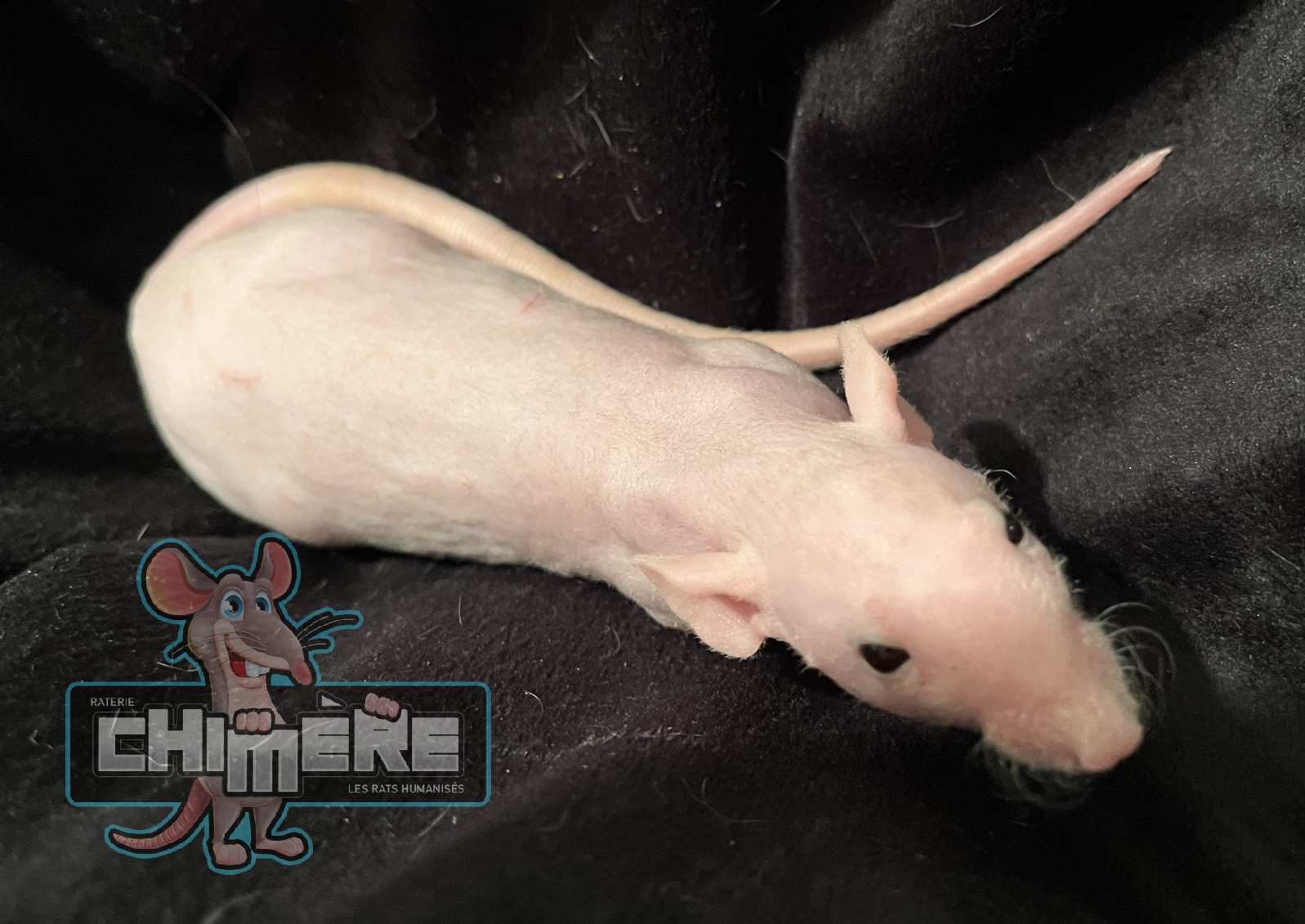
What type of Husky rat do I prefer as a rat breeder?
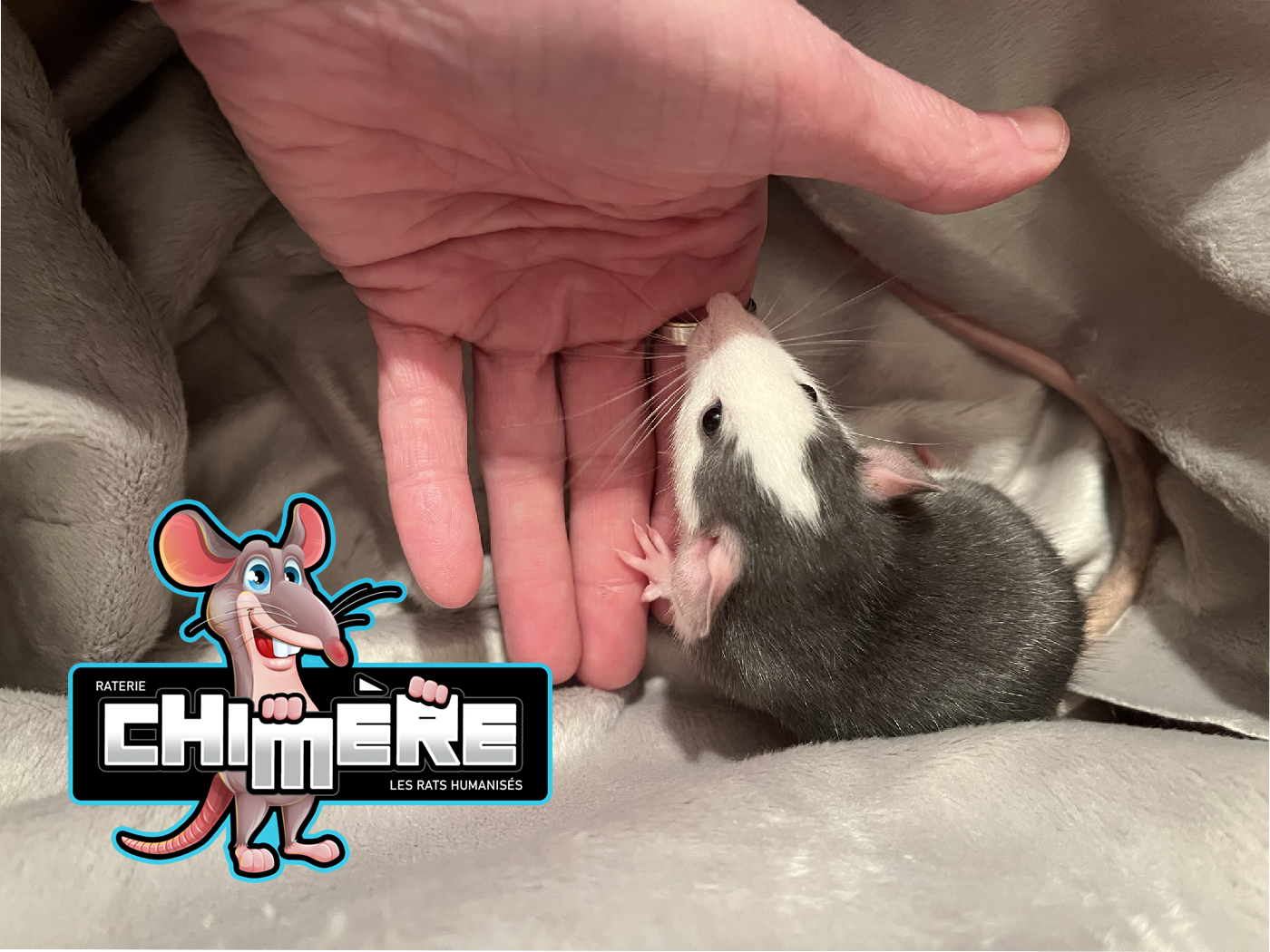
For me, the one that particularly appeals is the husky berkshire, which turns practically white. With his beautiful black eyes and white coat, the white husky rat makes me go completely gaga. I find it special to be the human of a rat whose markings will constantly evolve to become almost entirely white from a covered husky. In fact, I find this transformation spectacular. I’m working towards this goal for one of my lines, even if it doesn’t meet the standards. The selection work to achieve this goal can be done with a Siamese husky. I explain how this happens in this article about the Siamese rat. I believe that it is by developing new variants in certain lines that standards change and evolve. I won’t stop myself from creating lines that I find magnificent, as I love diversity. Some standards inspire me, others less so or don’t inspire me at all. It’s the ones that delight me that I keep in my lines
Each Husky is unique because the white hairs that replace the colored ones appear more or less quickly
I have a beautiful 16-week-old female Husky who has retained a lot of her black hair, while another of my Husky rats has seen his agouti blue coat quickly replaced by a lot of white hair, the rex hair helping to give a paler (more washed-out) effect, and I’m delighted that this young male is whitening visibly. I love these two Husky rats, they’re sublime in my eyes!
Husky rat standards
Here are the standards for breeding roan or striped Husky rats, according to the American Fancy rat and mouse association (AFRMA)
Husky roan
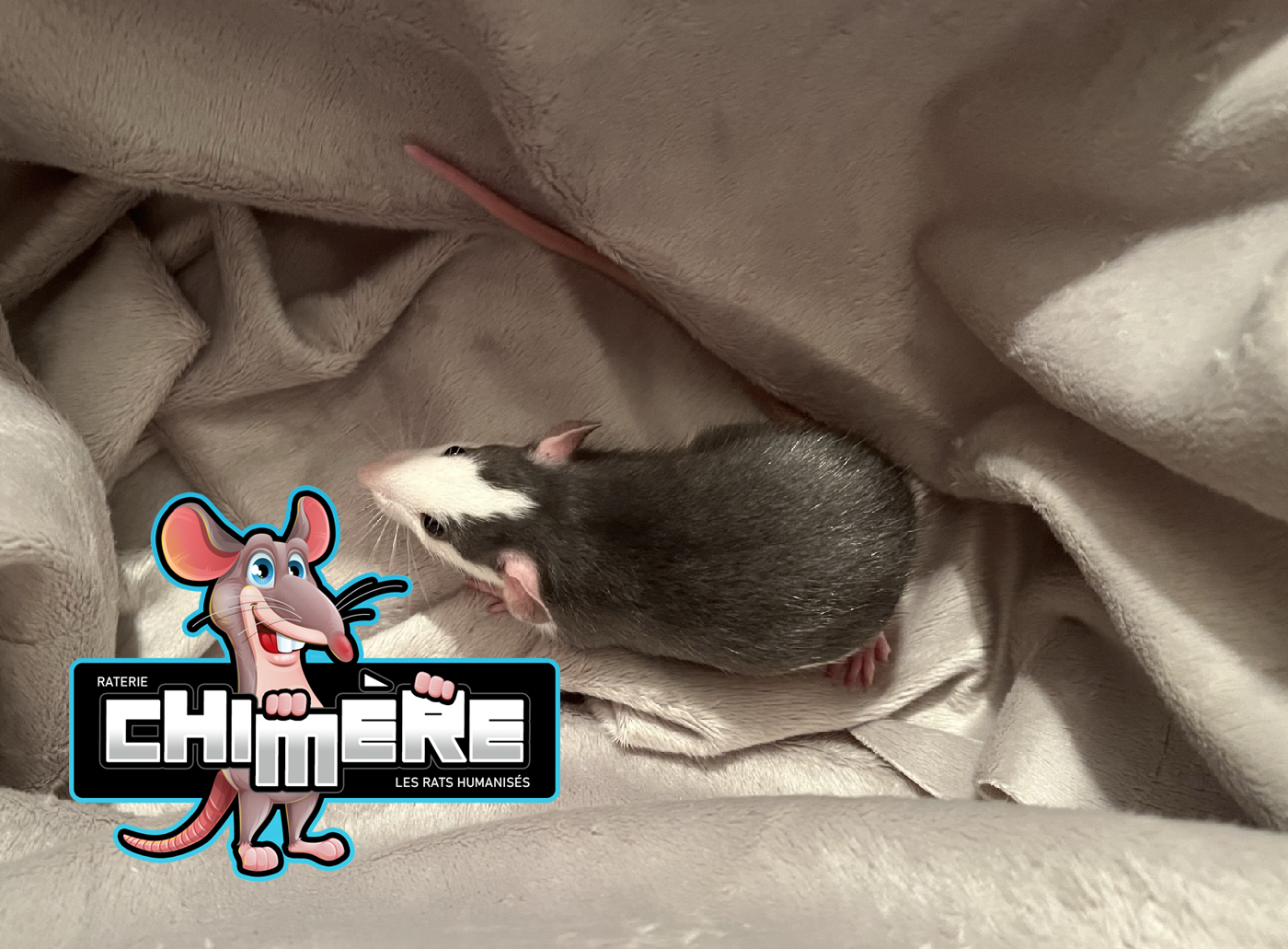
- On the head, the marking must form a symmetrical triangle (Blaze). The base of the triangle should be at eye level and the tip on the forehead, between the ears. Cheeks should be white.
- Back and shoulders should be colored. The marking extends over the flanks but must not extend over the belly, and stops at the base of the tail. The marking must be clean and well defined.
- The color must be uniform, with no lighter areas in the marking.
- The tail must not be colored.
A Husky rat will normally have a triangular blaze. A characteristic that is unique to the Husky rat is that its markings invariably touch its eyes and ears
Husky with stripe
- On the head, the marking should form a symmetrical triangle (Blaze). The base of the triangle should be at eye level and the tip on the forehead, between the ears. The cheeks should be white.
- The marking continues on the back in a line that passes between the shoulders and stops at the base of the tail. The line must be smooth and unbroken. The marking must be clean and well defined.
- The color must be uniform, with no lighter areas in the middle of the line.
- The tail must not be colored.
Type of marking in Husky rats
Husky berkshire
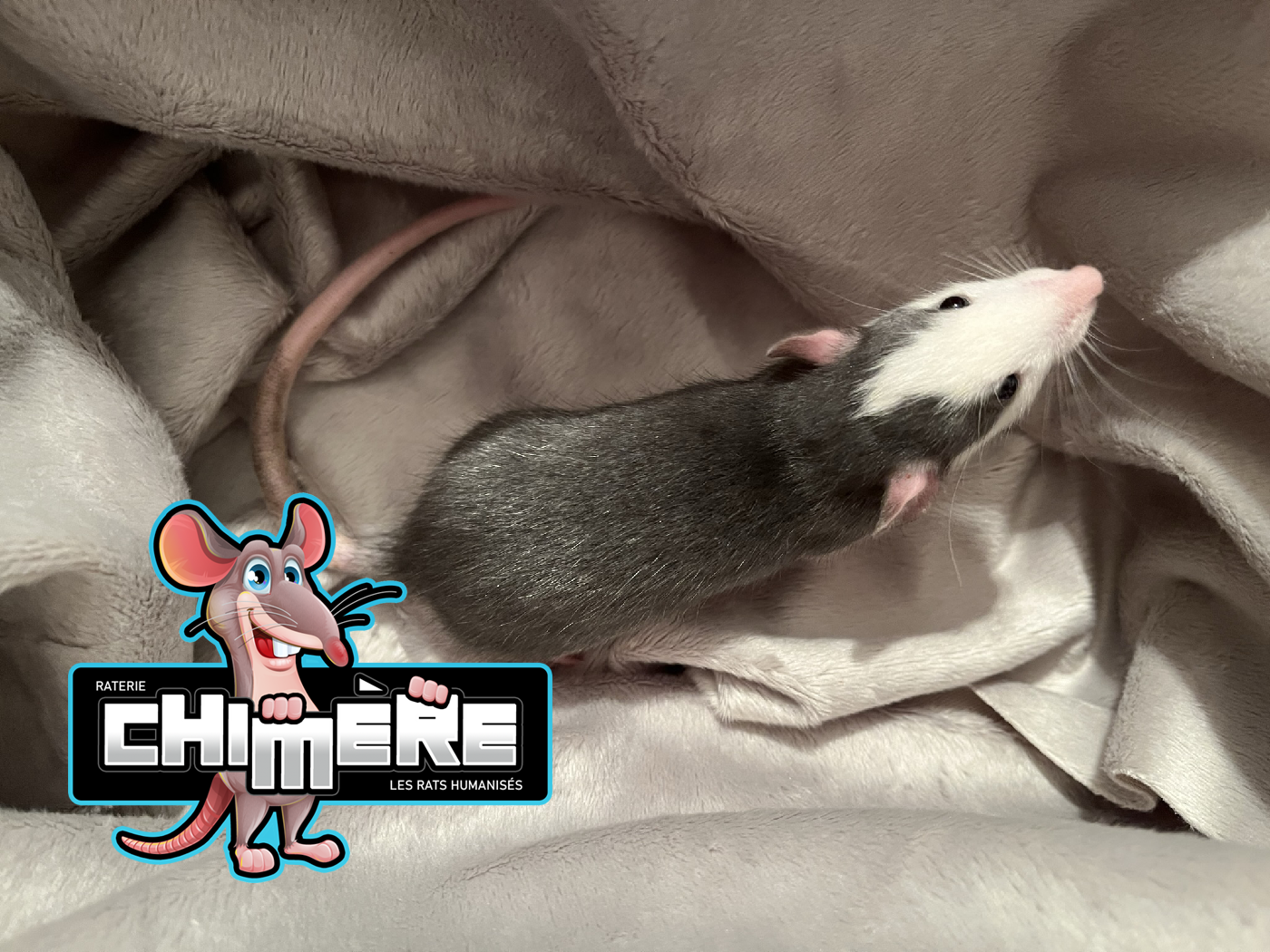
The Husky berkshire has a predominantly colored body. The colored stripe runs down to the flanks. Also known as the Husky covered or Husky roan as mentioned above
Husky hooded
The hooded Husky has the particularity of having a stripe on the spine. The color must not extend down to the flanks. Also known as a banded husky as mentioned above
Husky patched
The patched husky is distinguished by an interruption between the color of the head and the color of the spine, at shoulder level
Also known as the Collared Husky
Spangled Husky and Arrow Husky
As with all other dilutions, the Husky rat may sport an arrow or star on the head
Variety – Husky rat characteristics
As mentioned earlier, there are no breeds within the ranks of the domestic rat, but rather different varieties based on the following four characteristics
- Color type
- Type of marking
- Ear type
- Hair type
We’ve just discussed marking type, and before concluding, let’s take a brief look at color type, ear type, hair type and eye type
Husky rat color type
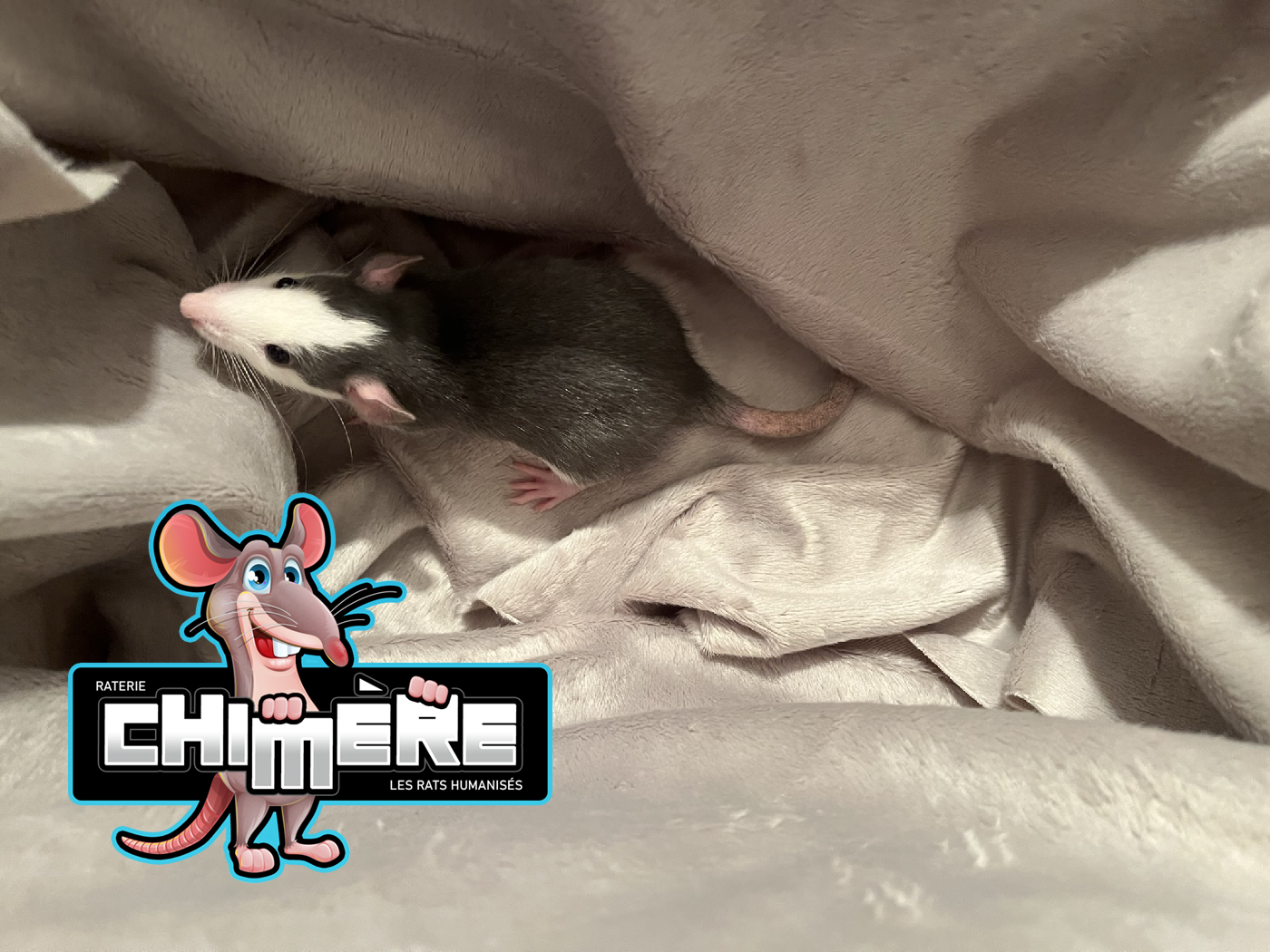
Among Husky rat breeders, we can find the black Husky, the agouti Husky, the blue Husky, the mink Husky, the champagne Husky, and so on. However, it’s more common for breeders to work on the color black in the Husky if they want to reach the established standards, but as already mentioned earlier in this article, the standards for breeding domestic or fancy rats in no way prevent diversity and the multiple possibilities of being able to create new lines of inspiring Husky rats whose offspring are simply cracking. Black, Russian blue, US blue and Agouti blue are four colors that I appreciate and try to select as best I can to establish superb Husky lines
Husky rat ear type
Whether Dumbo or standard, ears are a matter of taste for husky breeders. Personally, I like Husky rats with both Dumbo and standard ears. I find the standard ears more reminiscent of the Husky dog, which is where the name Husky comes from in the world of domestic rats, borrowed from the canine world
Husky rat hair type
Within the Chimère rattery, we have smooth-haired Husky rats, rex-haired Husky rats and naked Husky rats. However, for obvious reasons, naked Husky rats are not selected as breeding stock for their Husky markings, as they are indistinguishable due to the absence of hair
Husky rat eye type
Although eyes are not one of the characteristics used to distinguish the Husky variety in rats, they can at least provide a clue to help you answer the following question
How can I tell if my rat is a Husky?
Husky rats regularly have black eyes, but Husky dilution often has an impact on the color of the rat’s eyes, resulting in a blue Husky rat with ruby or pearly eyes . In fact, I’d say it’s this last aspect that makes me understand the position of rat breeders who think that Husky rat hair behaves like dilution
I sometimes think that the blue Husky rat with ruby eyes is perhaps both a marking and a dilution when we’re dealing with this kind of rat…and why not?
The Husky rat – the most popular rat variety
You don’t have a Husky rat, but you’ve fallen under the spell of the baby female Husky rat from the Chimère raterie featured in the photos in this article? You’re a lucky girl or boy to have crossed paths with this beauty, for in the meantime this baby rat has become a magnificent, gentle, calm and affectionate spleen – selection criteria that are very important to Chimère raterie when choosing the female rats that join our breeding program. The rat’s appearance is not the only criterion for choosing a female breeder, but also, and above all, her character. A beautiful Husky rat that’s cold, independent and nervous will never make a good pet rat
This beautiful rat in the photos was selected to develop one of our Husky rat lines, in particular our Roan Husky rat line, offering magnificent rats available for adoption to the general public
I want to adopt baby Husky rats
Want baby Husky rats that look like this sensational, affectionate spleen? Fill out our adoption form and Chimère will consider you as a potential adopter
